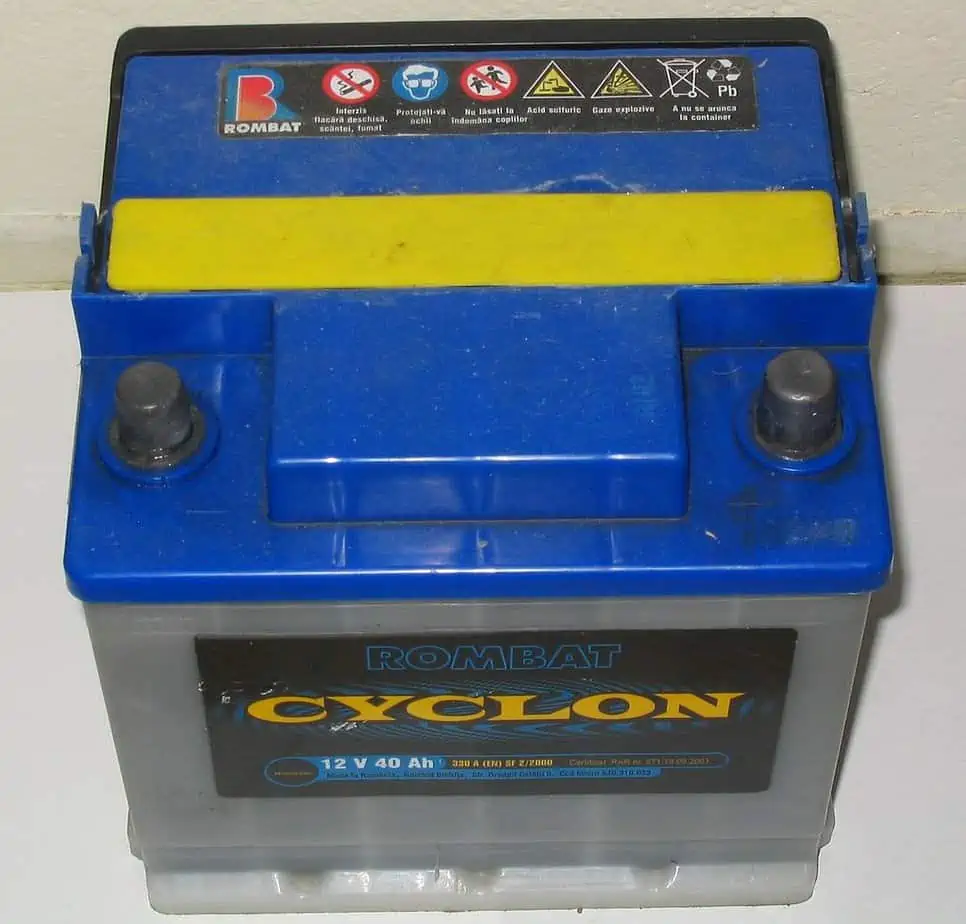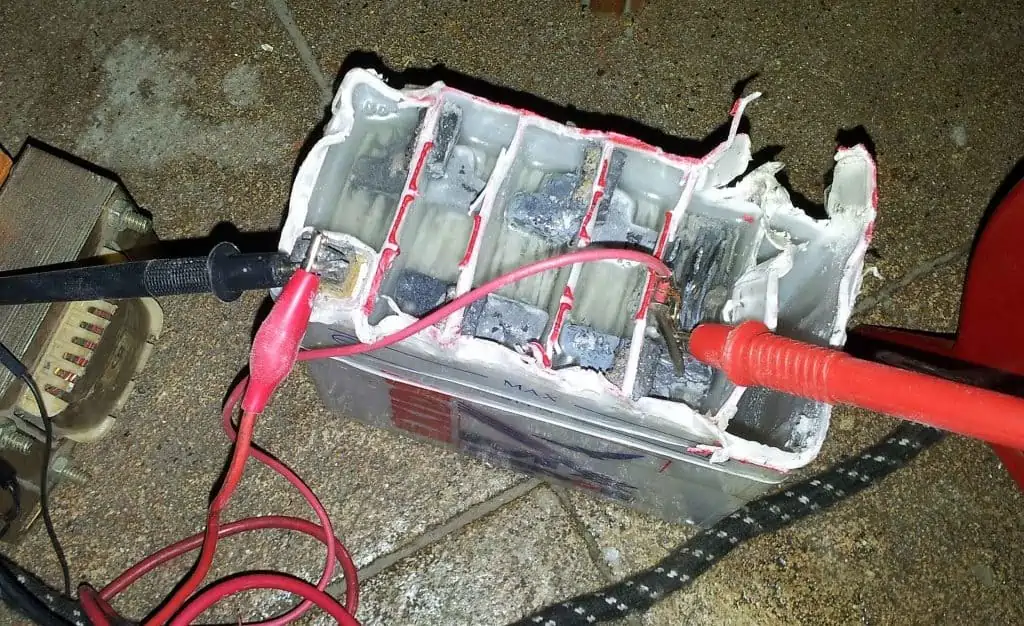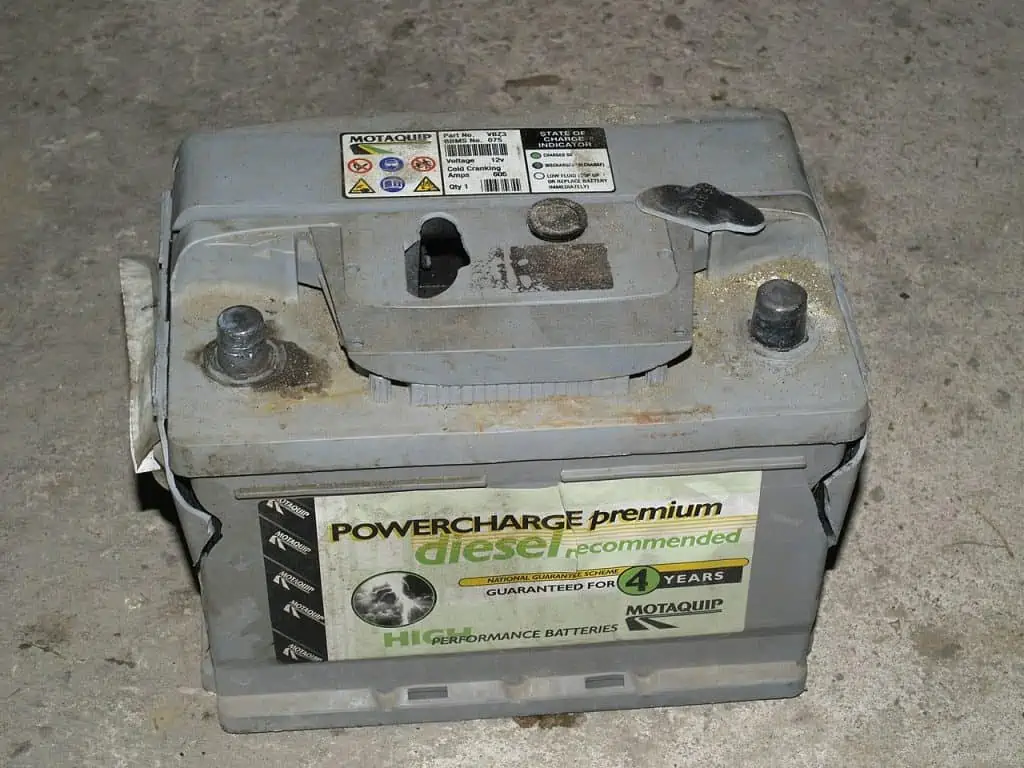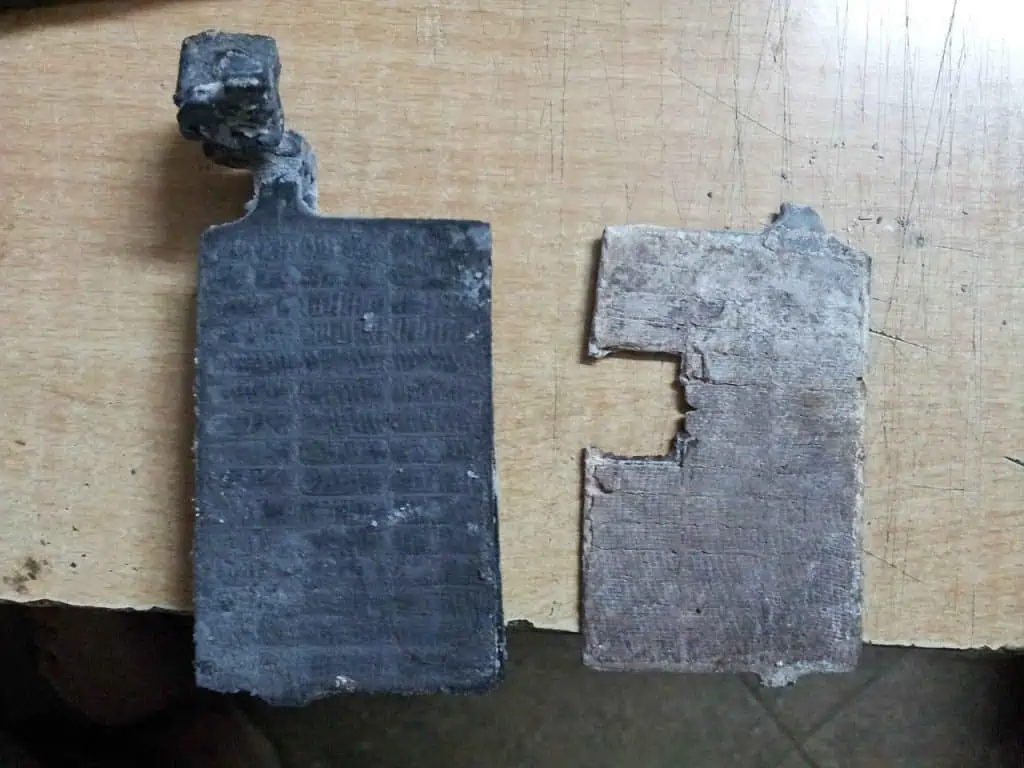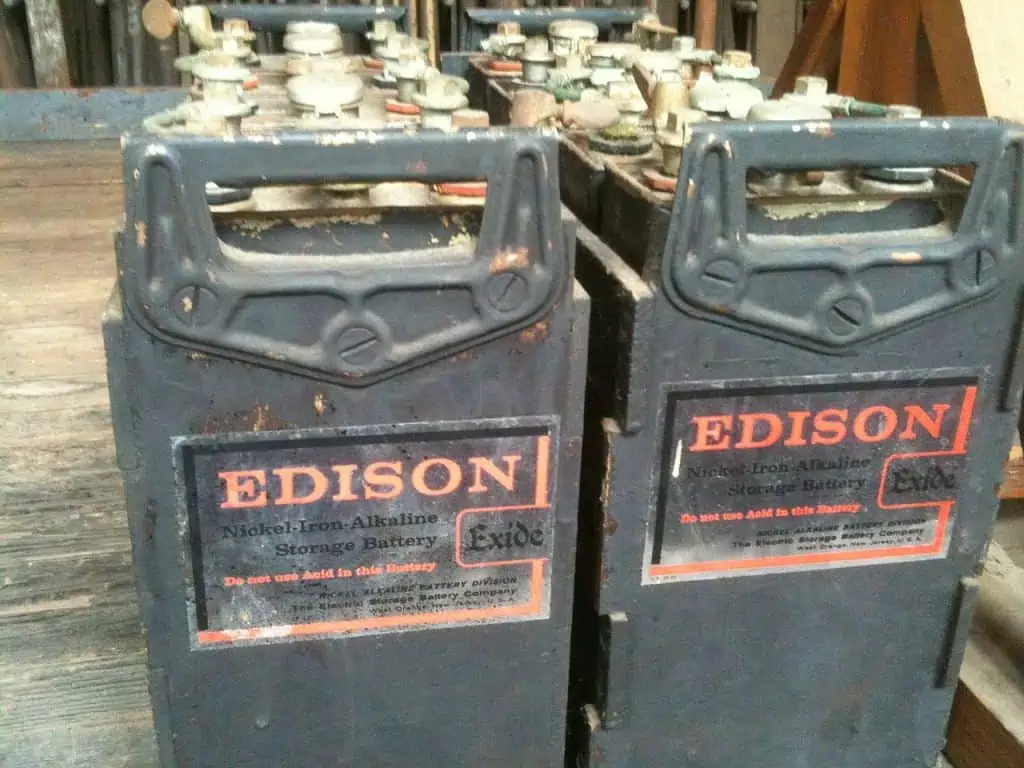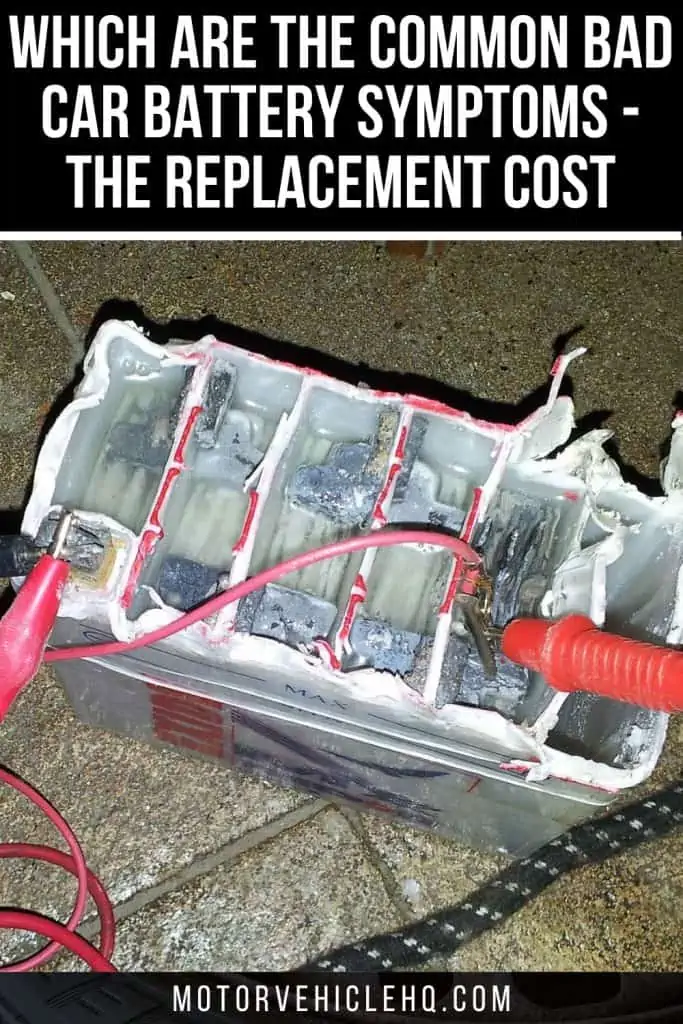Has your car had trouble starting recently? Are you concerned that a poor battery may be to blame? In that case, you’ve found the proper location.
We’ll look at a few indications of a poor vehicle battery in this post. When you are done reading this article, you will know how to spot a weak battery.
It might be upsetting to experience a battery problem with your vehicle. One of the most important parts of a contemporary car is the battery.
Your mental health may suffer if you question whether it is working properly. It’s crucial to solve any battery problems your car may have before they worsen and cause more serious mechanical problems.
Because of this, it should be simple for you to recognize the signs of a weak vehicle battery. It’s critical that you fully comprehend the root causes of this issue.
In addition, you should be aware of future prevention strategies, and that is precisely the kind of knowledge we hope to impart to you here.
We’ll start by examining what a car battery is and what it does within your vehicle. This will help you understand the significance of keeping a good vehicle battery.
What Is the Purpose of an Automotive Battery?
You should have a thorough grasp of what the battery in your car accomplishes before reading about weak car battery symptoms. So, if you’re prepared to learn the fundamentals of vehicle batteries, keep reading.
The battery is a crucial component of a car’s starting mechanism, and its primary function is to supply the electrical power necessary for your car to start. The battery is in charge of supplying the starting motor with voltage when the ignition is turned on.
The battery is an essential part of an automobile’s starting system, and its main duty is to provide the electrical power required to start your car. When the ignition is turned on, the battery is in charge of providing the starting motor with voltage.
The engine starts after the starting motor shifts a few gears. Chemical reactions provide the battery with its electrical energy.
A vehicle battery is made up of many lead plates that are dissolved in a mixture of water and sulfuric acid. When the ignition is started, this solution interacts with the active material on the lead plates, creating an electrical current.
You might be eager to read about the signs of a poor vehicle battery now that the technical explanation is over. We must first familiarize ourselves with the many vehicle battery kinds that are available. You can use this information to choose your next battery.
The Main Types of Automotive Batteries
We’ll talk about some of the most popular vehicle battery types in this section. Knowing your battery variety may be particularly beneficial because each variety has its own unique set of symptoms associated with poor vehicle batteries.
1. The Flooded Lead Acid Battery
This is the first battery type we will cover in our discussion on weak vehicle battery symptoms. These are one of the most popular sorts on the market and are also known as “Wet Cells.”
Six cells make up a wet cell battery, which when fully charged can deliver 12.6 volts. As a maintenance step, the battery’s electrolyte solution must be regularly topped off to guarantee lifespan.
2. The Silver Calcium Battery
These vehicle batteries are less prone to corrosion than wet cells. These batteries are a fantastic option for customers because they require no maintenance. These do have the drawback of quickly deteriorating, though.
3. The Enhanced Flooded Battery
Another development of the wet cell battery is this. EFBs are utilized in vehicles with basic start-stop technology and feature a sealed design. Compared to wet cells, they can crank an engine more than 50,000 more times.
4. The Absorbent Glass Mat Battery
Wet cells have been replaced by AGM batteries, which offer a quicker charge-up time and three times greater cycle life. Although they can cost up to two times as much as a wet cell, the benefits they offer make the expense worthwhile.
Now that you are aware of some of the most common vehicle battery types available, After that, we’ll turn to the signs of a poor vehicle battery.
Which are the Common Bad Car Battery Symptoms?
The significance of the automotive battery and various typical battery types have been covered thus far. We will now talk about the signs of a poor vehicle battery. Here, we’ll go through some of the most typical signs of a poor vehicle battery so you can see them as soon as possible. Let’s get going!
You should keep your eyes on the road and check the battery warning sign. Another term for this lamp is the battery light. The battery warning indication will illuminate in the instrument cluster when you turn on the ignition and turn it off after the car has started.
1. The Dashboard Warning Light
You should check the battery charge warning sign without taking your eyes off the road. The battery light is another name for this lamp. When you switch on the ignition, the battery warning signal will light up on the instrument cluster and go off after the car has started.
The alternator or battery is either weak or the light on the dashboard is on. As a result, if a battery light flashes on the dashboard, don’t assume that the problem is with the battery or the alternator.
Instead, examine and clean any corrosion on the battery terminals and the alternator, and inspect the battery terminals. Once you’ve established that your car’s battery has to be replaced, don’t delay in doing so.
When the vehicle battery is not charging correctly, this indicator illuminates. It may also activate if there is a problem with the battery inside.
This warning might frequently appear as a result of alternator problems. If you are experiencing this problem, it may be an indication of a weak battery, thus we advise having it examined by a specialist.
2. The Car Headlights are Weak
You can gauge the strength of your car battery using the lights on your vehicle.
Stop revving the engine and turn on the headlamp if starting your vehicle is difficult and you suspect the battery. The battery is fine if the headlight is bright. However, if the lights are faint, your battery is not fully charged.
There is a possibility that the battery electrodes are deteriorating or that the battery has additional problems. Please be aware that no matter how the alternator works, a dead battery won’t be able to retain a charge.
It could be challenging to do this test in broad daylight. This is because, on a sunny day, it may be difficult to see whether the headlight is shining brightly or dimly; nevertheless, there are alternative ways to verify the battery’s power throughout the day. See the following sign.
3. The Engine Cranks Slowly
One of the most important warning signs of a poor battery is a slow crank. Over time, this might become worse and possibly cause your devices to stop working as well.
This can leave you stuck and cost you time and money, so we’re warning you about it. When the battery cannot supply enough power to rotate the flywheel, slow cranks occur. One of the signs of a poor vehicle battery that needs quick treatment is this one.
4. Battery Terminals That are Corroded
Corrosion on the battery terminals is another sign of a weak automotive battery. Although not a clear clue, this might be a hint of a battery problem.
Corrosion may be caused by a loose connection or low battery water levels. Cleaning the corrosion could provide a short-term solution to this issue. However, you could need a new battery if rust continues to accumulate.
5. Failure of Car Electrical Components
The several electrical parts of the car are powered by the car battery. Failures in heated seats, power windows, power mirrors, and dome lights are just a few examples of signs of a weak vehicle battery.
Damaged Lead acid car battery by Sakar.solanki / CC BY-SA 3.0. If your battery seems to be aging to you, the likelihood is that it will start malfunctioning soon, if it hasn’t already. Batteries lose their capacity to store an electric charge as they age because the metal within corrodes at the same rate that the external terminals do.
Your car’s electrical system is highly reliant on the battery. The battery provides electricity to several parts of the vehicle, including the headlights, audio, entertainment system, dashboard lights, cabin illumination, windows, and windshield wipers.
Your faulty battery is probably to blame if the electrical components of your vehicle aren’t operating as swiftly or are flickering on and off.
6. Car Experiences Problems with Performance
The battery and the alternator are the two major parts in charge of a car’s electronics. The electrical output of the vehicle may be restricted by a poor battery. The car may identify this as a safety risk and have performance difficulties.
7. A Disinformed or Bloated Battery Casing
If your battery appears to be getting old to you, chances are that if it hasn’t already started malfunctioning, it will do so soon. Because the metal within corrodes at the same rate that the exterior terminals do, batteries lose their ability to hold an electric charge as they become older.
The battery’s capacity to store charge gradually decreases to the point that it can no longer store enough energy to start the vehicle, no matter how much power the alternator produces. There are a couple of workarounds, nevertheless, to keep utilizing your old battery.
Carefully using a cloth, you may remove rust from the battery terminals before having someone jumpstart the vehicle. Run the vehicle for a time before turning it off. Next, attempt to restart the car. If the car starts, it was unable to transfer electricity due to rust.
Swollen regions are a more obvious sign of a damaged battery. A frozen battery or hydrogen accumulation inside the battery is indicated by a bulging or bloated battery cover.
The main reason for a bloated battery casing is an overcharging alternator. A battery that has reached the end of its useful life may be to blame. A bloated battery indicates that the battery is degrading.
A bloated battery may occasionally function normally and supply enough electrical flow to start the vehicle. This does not, however, imply that you should be at ease and disregard this symptom. The existing battery may leave you stranded in the middle of nowhere, so you should budget for a replacement.
8. Clicking Sound as the Key Is Turned Into the Ignition
The vehicle delivers an electrical current to the starting solenoid when you push the start button or turn the key in the ignition. The starting procedure begins with this. The car’s battery is used to transmit the electrical current, hence a dead battery cannot complete this operation.
A failed battery will cause the starting solenoid to get a lesser current, which will result in a clicking noise.
9. Having to Put Gas Into the Car to Get the Engine Started
If you have to gas up your vehicle to start it, your battery is probably deteriorating. Nothing more than depressing the brake and turning the ignition key should be required.
10. A Backfiring Engine
Sparks from a failed battery may cause the vehicle to backfire in rare circumstances. Although a failing battery is just one of several problems that might make a car backfire, this is a warning sign that you are sure not to overlook.
Freezing conditions have the potential to harm batteries. A car battery will attempt to provide the same amount of power as it would if it were fully charged, even though it may be up to 35% less powerful in below-freezing temperatures.
11. The Battery Appears Outdated
Batteries only have a finite lifespan. Your battery will ultimately need to be changed because it will not last forever. If your vehicle is exhibiting some of the symptoms on this list and your battery hasn’t been changed in a while, it’s probably time to invest in a new one.
Car batteries may survive up to ten years, however, this is uncommon. They often endure for four to six years. Always expect a car battery to last at least two years.
If the vehicle is driven every day to keep the battery charged, the battery will last longer. The battery of a car that is left idle for long periods will wear out more quickly than one that is driven often. Although they typically only last approximately five years, car batteries can live up to ten years.
12. Scent of Sulphur In the Car
Some individuals may associate the smell of sulfur with the stench of rotting eggs. One of the most obvious signs of a poor vehicle battery is this one.
An electrolyte solution is present in automotive batteries, as we previously explained. This mixture of water and sulfuric acid is the solution. These components could evaporate as a result of the battery deteriorating over time. The mixture’s composition may alter as a result.
The battery will overheat as a result. The electrolyte solution boiling within the battery is what produces the sulfur odor. In extreme cases, the battery can even start to smoke.
If you ever notice a sulfur odor in your car, change the batteries right away. We mention that a battery that is overheating might spark a fire, which could result in fatalities.
Now that you are aware of the signs of a weak vehicle battery, you might be curious as to why a battery keeps dying. We believe that you ought to be knowledgeable about that. We say that because you may avoid this from occurring to you in the future by being aware of these facts.
13. Batteries Malfunctioning In Cold Weather
A battery can be damaged by freezing temperatures. Even though a car battery may be up to 35% less powerful in below-freezing conditions, it will still make an effort to generate the same amount of power as it would if it were completely charged. This weakens the battery permanently over time until it finally fails by wearing it out.
The battery will probably need to be changed if the vehicle becomes so cold that it completely freezes. A battery that freezes solidly is probably electrically dead and cannot be recharged or fixed. You’ll need to get a new battery.
14. A Weakening Car Horn
A weak or dying battery is frequently indicated by the horn becoming feeble. The brightness of the headlights, the volume of the horn, and the battery light on the dashboard are the first three things I check as a mechanic anytime I suspect a dead battery.
You have a dead battery if any of these three or any two of them are present at once. To start your car and get to work or other everyday activities, recharge it or replace it.
What are the Main Causes of Bad Car Battery Symptoms?
A car battery may keep dying for a variety of reasons. Here, we’ll talk about some of the most well-known root reasons for this problem.
Nissan Leaf showing part of the battery by Tennen-Gas / CC BY-SA 3.0. Extreme temperatures might harm your car’s battery permanently. The battery fluid may evaporate at higher temperatures, damaging the battery’s internals. Additionally, it can hasten the lead-plate deterioration of the battery.
1. Bad Car Battery Symptoms Can Be Caused By a Faulty Alternator
An alternator that isn’t working properly is one of the key reasons why a battery keeps dying. Once the engine is started, the alternator is in charge of charging the battery.
The engine’s mechanical energy is transformed into electrical energy by the alternator to carry out its purpose. The battery is charged with this electrical energy.
Numerous factors might cause the alternator to fail. Some typical causes include improper jump starting of the vehicle or substances seeping into the alternator. When this occurs, the battery may be impacted, leading to symptoms of a weak car battery.
2. Bad Car Battery Symptoms Can Be Caused By Extreme Temperatures
The environment’s temperature has an impact on batteries. Your car’s battery may suffer irreparable damage from extreme heat and cold. Higher temperatures may cause the battery fluid to evaporate, harming the battery’s internals. Additionally, it may accelerate the degeneration of the battery’s lead plates.
The automotive battery may be overcharged as a result of higher temperatures. The battery charging system’s components may be at blame for this overcharging. Overall, warmer temperatures might reduce your car’s battery life.
Cold weather, on the other hand, isn’t exactly good for your battery either. It can lessen the battery’s capacity and slow down how quickly it recharges.
Additionally, the winter months may result in an increase in the strain on your battery. This is because wintertime usage of amenities like heaters, headlights, and defrosters is higher. Your battery may become weaker as a result of all these problems and keep dying.
3. The Vehicle Has Not Been Driven In a Long Time
Batteries lose their charge over time, just like most things do. This can just be a function of how vehicle batteries work, or it might be a problem known as a parasitic drain. When your vehicle’s battery drains more quickly than usual when it is parked, this is referred to as a parasitic drain.
There are numerous possible causes for this. Most often, it has to do with an electronic item that is broken and doesn’t switch off properly. Your battery may continue to be drained by this device when the car is in the park.
The alternator is the additional element that generates energy, as we have already discussed. You might wish to learn how to tell an alternator from a poor battery. And that’s exactly what we’ll talk about in the part after this.
Alternator Vs. Bad Car Battery Symptoms
Here, we’ll offer advice on how to distinguish between the signs of a faulty alternator and a weak vehicle battery. With the use of this knowledge, you can pinpoint the right problem and get it properly rectified.
1. Very Common Stalls
The car constantly stalling is one of the primary signs of a faulty alternator. The dysfunction of the fuel injectors is the main cause of this. The fuel injectors may not be able to work if the alternator is malfunctioning in any way.
Sulfated plates from a 12-V 5-Ah car battery by Sakar.solanki / CC BY-SA 3.0. A car battery is made up of several lead plates that are dissolved in a solution of sulfuric acid and water. This mixture reacts with the lead plates’ active substance to ignite the ignition, producing an electrical current.
This may result in the engine not receiving gasoline, which can cause stalling. We advise having your alternator examined by a professional if your car is experiencing this problem.
2. Engine Producing Whining Sounds
A device powered by a belt drives the alternator. Failures of the alternator may result from this belt being worn or out of alignment. A creaking noise coming from the engine may indicate this problem.
Over time, the alternator’s internal bearings may also degrade. The buzzing noise of worn bearings make makes them easy to spot.
If you have brought your car to a technician and they have determined that the alternator is working properly, then the symptoms of a weak car battery may mean you need to get a new battery. In such a case, you might be interested in learning how much a new battery will cost. In the part that follows, we will provide you with the details.
How Much Does a New Car Battery Cost?
Prices for car batteries mostly vary based on the battery’s technology and anticipated lifespan. Why does that matter? Batteries with estimated lifespans of 36, 48, or even 60 months are available on the market.
As you would have predicted, the battery costs more the longer its lives. The price of a car battery might vary depending on many other elements, including its brand, weight, warranty duration, performance, and where you buy it.
The Buying Cost
Lead-acid batteries are often the least expensive kind of batteries on the market. You may have to pay between $70 and $180 for these. A core fee could be applied on top of the purchase price if the old battery is not given.
This core fee, which the government has enforced to encourage recycling, can range from $5 to $15 depending on your state. AGM batteries, on the other hand, may be purchased for between $150 and $250. Although this expense can appear high, it has long-term dependability benefits. If you can, get an AGM battery, which is what we advise.
The Cost of Installation
After making your purchase, you might also have to pay installation fees to have it installed in your car. The majority of users should have no trouble changing the batteries on their own with the use of online instruction.
However, a mechanic can install the batteries in around 10 minutes if you are not prepared to take on this endeavor for any reason. After you buy a battery from one vendor, you could be eligible for a free installation from another.
But other stores could give you a price for a battery installation between $10 and $50. You would probably do better if you installed the battery yourself, in our opinion.
Tips on How to Start a Car with Bad Car Battery Symptoms
If your vehicle battery is dead, you can attempt jump-starting it. Using a portable auto jump starter is the simplest way to jump-start a car. If you don’t have access to one, you can attempt jumpstarting the car the conventional method.
Nickel-iron car batteries by z22 / CC BY-SA 3.0. Another indication of a poor automobile battery is corrosion on the battery terminals. A loose connection or low battery water levels may result in corrosion. A temporary fix for this problem could be to clean the corrosion. However, if rust persists in building up, you could want a new battery.
You need the aid of a donor car for this. Once both vehicles have been parked close to one another, turn off the engines of both. Next, connect both cars’ jumper wires. Take care to properly connect the wires to the positive and negative terminals.
The electrical systems of both vehicles run the danger of being destroyed by improper cable connections. Connect the cars and then turn them on. Start the donor car before attempting to start the one with the dead battery. To allow the alternator ample time to charge the battery, keep the engine running.
The Conclusion
Our discussion of indications of a poor vehicle battery has come to an end. We covered a lot of significant vehicle battery-related subjects in the course of this post. We began by providing you with an overview of what car batteries are as well as some of their primary purposes in your vehicle.
We then discussed the various vehicle battery types available on the market, discussing both their advantages and disadvantages. We covered why vehicle batteries may keep dying as well as some of the most typical indications of a poor car battery.
We showed you how to distinguish between a bad alternator and a bad battery. Finally, we gave you details on how much a battery replacement will cost.
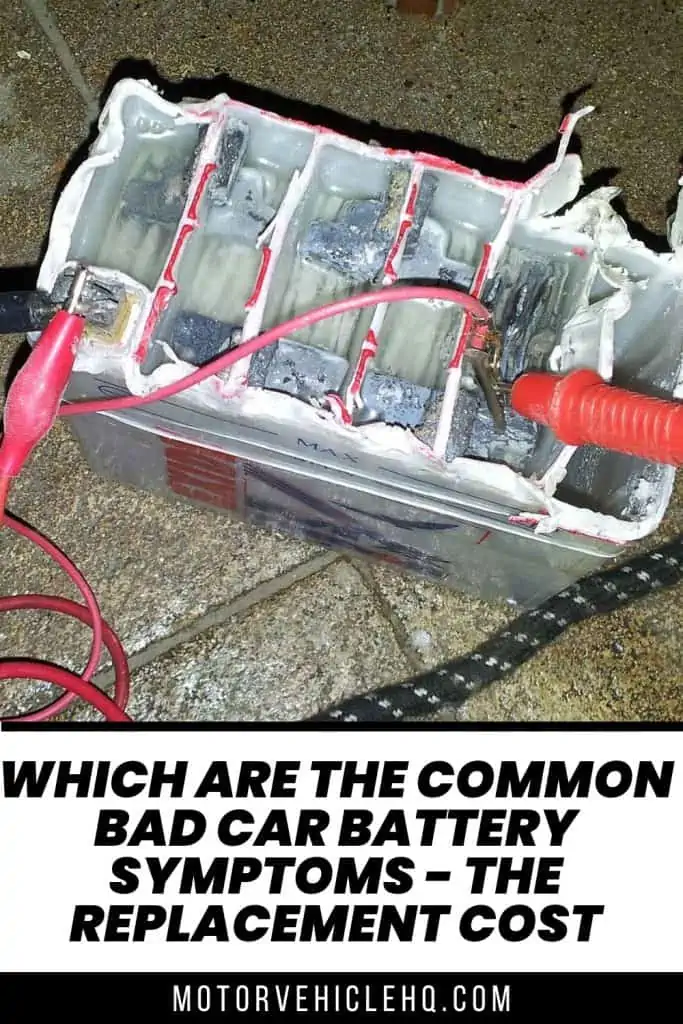
Damaged Lead acid car battery by Sakar.solanki / CC BY-SA 3.0

Jim Wicks is the founder of MotorVehicleHQ. With over two decades of experience in the automotive industry and a degree in Automotive Technology, Jim is a certified car expert who has worked in various roles ranging from a mechanic, car dealership manager, to a racing car driver. He has owned more than 20 cars over the past 15 years. Ask him about any vehicle you see on the road and he can tell you the make, model and year. He loves the aesthetics of all things cars, and keeps his vehicles in pristine condition.
In his free time, Jim enjoys getting his hands dirty under the hood of a classic car or taking long drives along the country roads. His favorite car? A 1967 Shelby GT500, a true classic that, according to Jim, “represents the pure essence of American muscle.”
